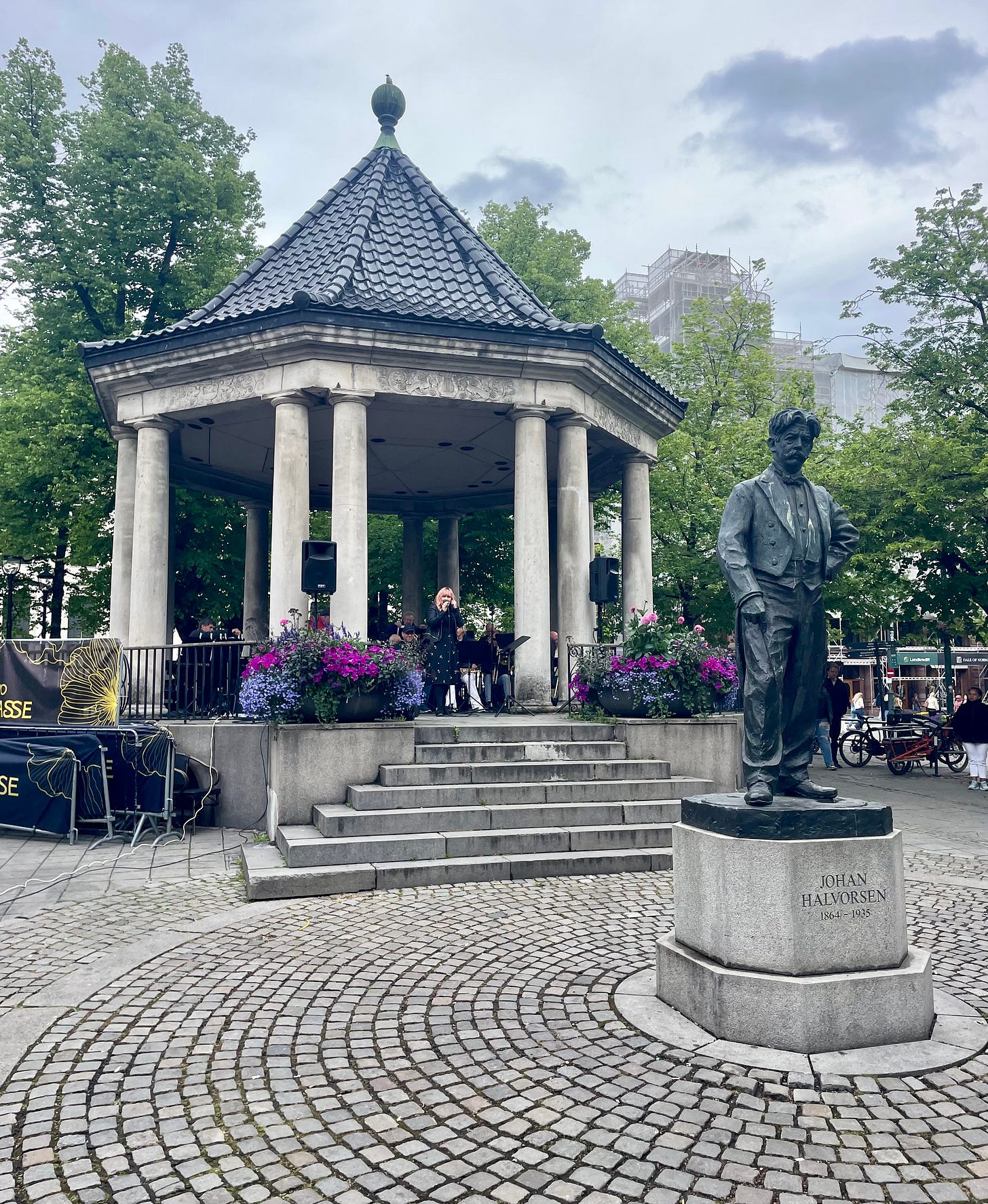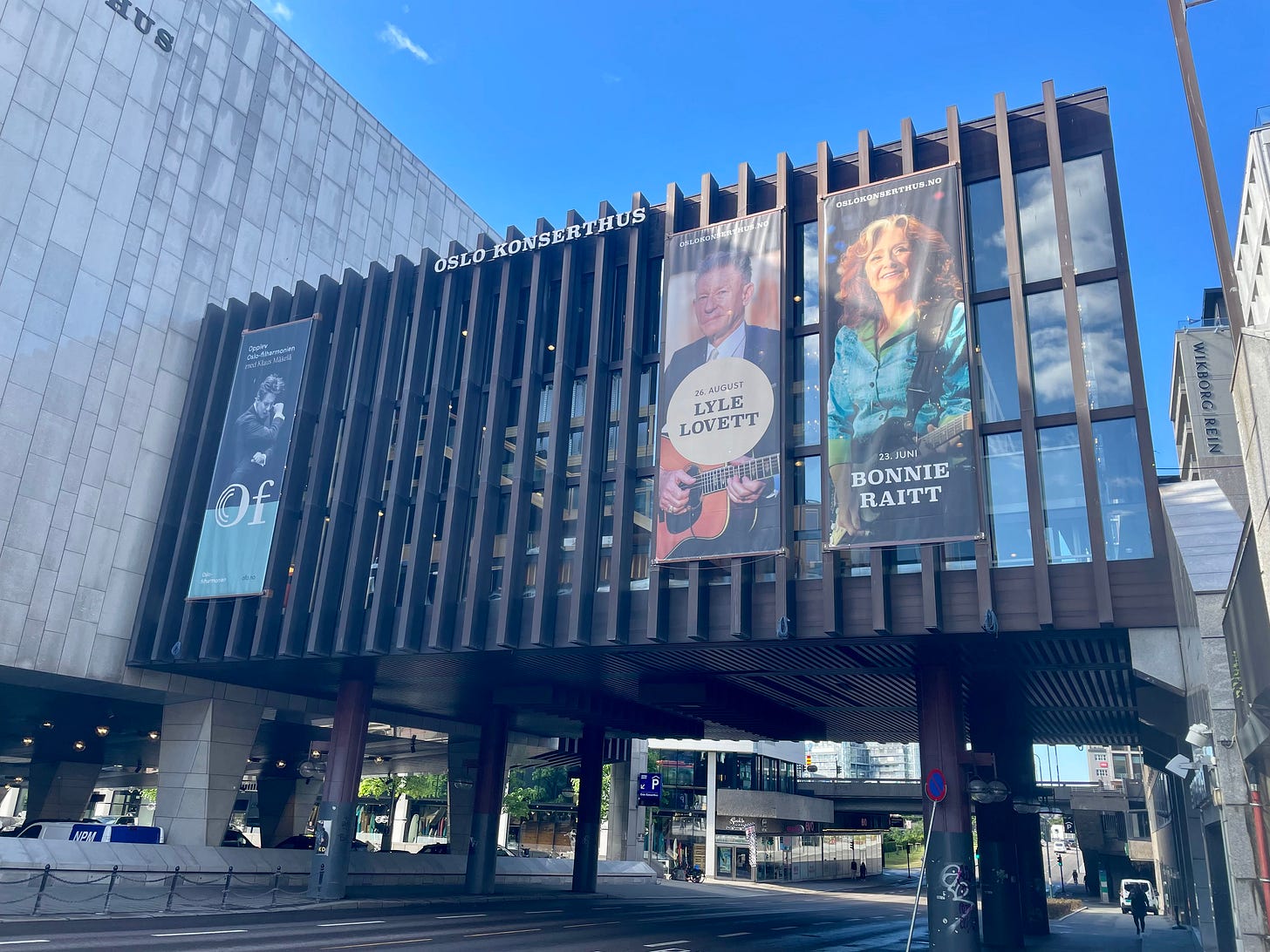Oslo Journal, Part I
Sights, sounds, and other things in Norway’s capital
Dear readers: The Oslo Freedom Forum is being held this week. OFF is the annual human-rights gathering in the Norwegian capital. I have said a little about this year’s Forum already. I will have considerably more to say later. In the meantime, might you like an Oslo journal, in a couple of installments or more?
At Oslo Airport, the plane from New York has come to a halt. Getting up, the lady behind me tells her seatmate, “You know, I was born a few kilometers from here. I live in New York now. But I was born in an out-of-the-way place, just a few kilometers from here.”
Basically, her seatmate is a stranger to her. But she feels compelled to voice this, to him and to a handful of us who are standing around and listening. The lady is a grandmother’s age. Pure white hair, ruddy face.
“Well, welcome back,” I tell her, and she grins.
***
I present my passport to an immigration officer, who is friendly. “Did you have a good flight? Are you tired?” He looks to me to be of Persian heritage. I think of the Speaker of the House—or rather, the president of the Storting (Norway’s parliament). His name is Masud Gharahkhani. I heard him speak two years ago. In an article, I wrote,
His family fled Iran in 1987, when he was a child. “Every single day, I’m grateful to live in a country built on democracy and human rights,” he says. When he leaves the Storting after work, he regularly hears the sound of a rally or protest outside. It is sweet music to his ears—a democratic sound.
Gharahkhani said, “A free person has many dreams. An unfree person has only one dream.” That is a striking formulation, I believe.
***
Uniformed officers are on the train platforms, helping travelers find the right train, even showing them which car they should board. How civilized.
***
As are the trains themselves in this country—and many another country in Europe. “Ah, Nordlinger’s saying they make the trains run on time!” Yes, they do (by and large). And the trains are attractive and comfortable (by and large).
That’s not too bad—and you don’t need Mussolini to do it.
***
Stick to the issue of Norway and transportation: Did you see this news, which went all around the world? I have linked to an article, from the Associated Press, but the picture that accompanies the article is the outstanding thing. Headline: “A Norwegian man awoke to find a grounded cargo ship had narrowly missed his home.” Yup, it had.
***
I see a sign advertising Grieg Seafood. Hmmm: any relation to the composer? Wikipedia tells me the company is based in Bergen, which was the composer’s town. And a friend of mine from Bergen—Camilla Helen Heiervang, who works for the Human Rights Foundation (which stages the Oslo Freedom Forum)—tells me that “Grieg” is not a common name.
Hmmm (to repeat myself).
***
Stick with composers: In Oslo, I notice a street named after Christian Sinding, which pleases me. He lived from 1856 to 1941. He is best known for a piano piece: Rustle of Spring. Once upon a time, every student of the piano learned it (not sure about now).
Care to hear it, played by Joseph Cooper? Here.
***
An image you’re apt to see in Oslo is that of The Scream, the painting by Edvard Munch (1893). The Scream, in fact, lives here. It lives in a couple of museums.
What does that mean? Does the painting travel from one place to the other? Well, as I understand it, there are several versions of The Scream, created by the artist . . .
***
Outside the train station at the National Theater, a man is preaching the Gospel. Fine with me. He is using a mic. Not sure that’s fine with me. What do you think of preaching, or other speechifying, with amplification (in public places, such as plazas, I mean)?
I don’t like it, frankly. Even if I like what is being said. It is too intrusive. Too “you will listen to me whether you like it or not.”
***
Want to see the National Theater? With Ibsen—Henrik Ibsen himself—standing guard?
***
Nearby, a band is playing in a shell (which resembles a gazebo). In front of the band, a singer is giving us “Can’t Take My Eyes Off You.” She’s good. In the audience, a mother and a daughter are grooving to the song, mouthing the words. I’m glad for this two-generation enjoyment.
Steps from the shell/gazebo is a statue of Johan Halvorsen, another Norwegian composer (1864 to 1935). He is pigeon-streaked, I’m sorry to say.
Hang on, here’s a glimpse of the scene:
***
There is a Rosenkrantz Street, which has a Rosenkrantz Hotel. Do you recognize the name? It is an old name, belonging to a family of yore—a noble family, which got going in the 14th century. Started in Denmark, as I understand it, and spread to Norway, Sweden, etc.
You know the name. If only from Shakespeare’s Danish play . . .
***
Have a red building, enhanced by a passing blue train:
***
Have another shot, or blast, of red (or red-orange). Impressive, right?
***
In my hotel room, the windows open. It is possible to get fresh air. To an American, accustomed to American hotels, this is well-nigh a miracle . . .
***
Oslo, like other European cities, has Stolpersteine, or “stumbling stones.” Embedded in sidewalks, they tell you where particular people lived or worked.
I stumbled upon the one pictured below. “Here worked Sofie Springmann,” born in 1896. She was deported to Auschwitz in 1942 and murdered there the same year.
***
On City Hall is a number: 75. The structure was built in 1950, so this is an anniversary year. The structure is very representative—is it not?—of mid–20th-century architecture. For many years now, the Nobel Peace Prize ceremony has been held in this building.
***
At the Konserthus—Concert House—there are three banners (as you can see below). One of them is of Klaus Mäkelä, the chief conductor of the Oslo Philharmonic. He is not yet 30. Soon, he will be the chief conductor of the Royal Concertgebouw Orchestra (Amsterdam) and the Chicago Symphony Orchestra. Both. Simultaneously.
The other banners depict Lyle Lovett and Bonnie Raitt. There is a banner on the other side, too: Jon Batiste.
I feel there is a point to be made about public tastes here. The non-classical musicians outnumber the classical, by a lot. (And the Konserthus is meant to be a classical home.)
***
It’s always good to see my old friend Mariss Jansons. I say “my old friend.” He was really a friendly acquaintance, and he meant a lot to me. This great conductor led the Oslo Philharmonic from 1979 to 2000. He went on to other posts, including the one in Amsterdam. I had a couple of memorable interviews with him, and some private conversations. I admired him, as a musician and as a person. When he passed away, at the end of 2019, I wrote an appreciation of him, titled “Mahatma Jansons.”
Anyway—in the Oslo Concert House:
***
Let’s go to the opera—I mean, the Oslo Opera House. Things are looking . . . rather acrobatic:
***
And here is some of what the eye catches, as you look out from the Opera House:
Maybe we’ve had enough for one installment? Yeah, you’re probably right. See you tomorrow. And thanks for coming along with me.














I did enjoy. Thanks!
So enjoyable—can’t wait for more.